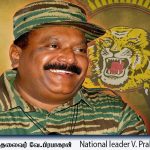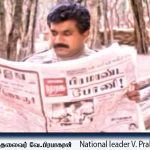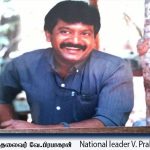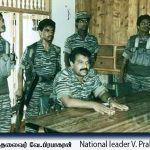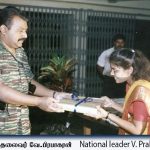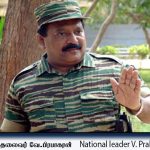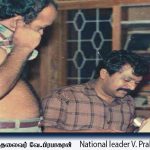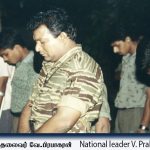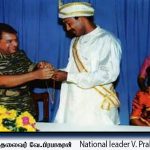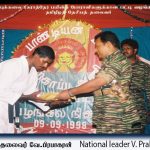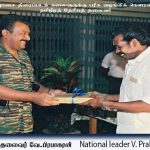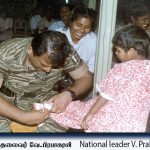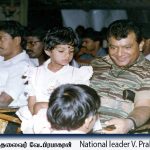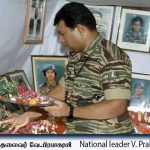

The leader who carried the danger to the Tamil race on his shoulders …!
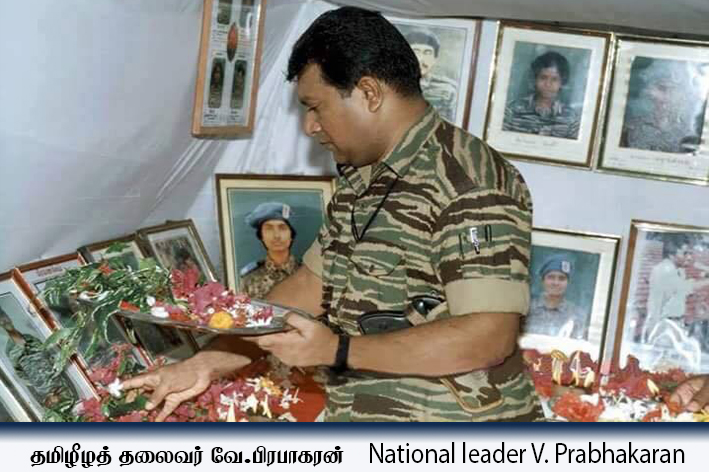
On 10.10.1987 the Indian forces suddenly declared war on the LTTE. There were no immediate reasons for this declaration of war. Everything had already been pre-determined.
The consensus of the Indian rulers was to assassinate President Prabhakaran and eliminate the LTTE: it had a number of profound reasons for this:
The Indian ruling class, which had been in joy due to the decreasing Tamil sentiment in Tamil Nadu correctly recognized and began to fear that it had taken a new form and grown rapidly under the leadership of leader Prabhakaran in Tamil Eelam. Therefore, the Indian ruling class began to regard leader Prabhakaran as its main enemy.
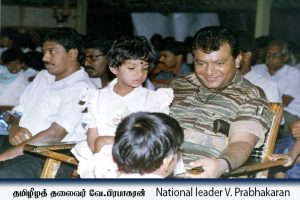
First, they wanted to incite an internal conflict amongst Tamils in Tamil Eelam, but that did not succeed. After that the Indian ruling class decided to directly destroy the Tamil Eelam nation itself. First it wanted to try through political means. Through the political chess game of the Indo-Sri Lanka Accord, it insidiously sought to undermine the Tamil Eelam nation.
However, the LTTE mastered the political chess and began to expose the true nature of the Indian ruling class to the people of Tamil Eelam. The people of Tamil Eelam also started to realise this. The Indian ruling class did not want this to grow. Therefore, it decided to move on to the next stage of the war, which they had already decided long time ago. Before targeting the LTTE they wanted to cut any media connection between the rest of the world and Tamil Eelam and bombed the two newspaper organisations, Eelamurasu and Murasoli, and Nitharsanam telecast tower.
Leader Prabhakaran was the main military target of the Indian forces. India decided to use force to destroy leader Prabhakaran, snatch away the teeth and claws of the LTTE and hang the Tamil Eelam Nation. But the war went beyond the time frame predicted by Indian diplomats. The devastation and loss increased enormously. The Indian ruling class expected that fearing for his life, leader Prabhakaran would give up on the fight for the Tamils right and freedom, but this did not happen. The Indian rulers were both surprised and angered by this and decided to engage in a political and military game.
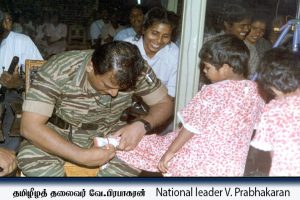
The Indian government said that the leader will be offered large sums of money and other goods if he comes forward to stop the war and hand over arms. The Government of India has assured the LTTE representatives in India that it was prepared to provide Rs. 500 crores for the rehabilitation of the Tamil people and Rs. 200 crores for the movement.
Colonel Verma, the chief executive of RAW, India’s intelligence agency, was involved in the negotiation on behalf of the Indian government. Colonel Verma tried to tempt leader Prabhakaran with the money and suggested to him that with this large sum of money factories can be build; money can be earned by making investments as well as winning elections and taking office with the money. He was trying to convince Prabhakaran that he could leave a life in luxury if he accepted. Not only that, but he also suggested that even if the LTTE handed over the weapons the leader could have the weapons he needed for his and his commanders’ security.
India did not only try to convince with promises of money. The Indian government also increased military pressure on the leader to quickly bring him down. Indian forces intensified military operations by besieging the desert area. The Indian Air Force began dropping 200 kg bombs on areas considered to be the leader’s location.
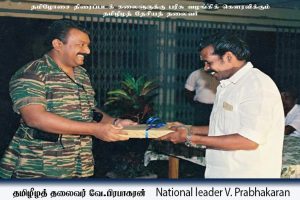 The massive bombs were falling and exploding to the point of frightening the occupants, shattering the dense forests and turning them into open fields. Indian officials warned that the bombs would be dropped on the leader’s locations, explaining to LTTE representatives in India the nature of the 200 kilograms of bombs, saying, “The leader is going to die soon. Ask him to accept our conditions before that’’. The LTTE representatives in India, who wanted to save the leaders’ life at any cost, through fax they begged him to accept the conditions.
The massive bombs were falling and exploding to the point of frightening the occupants, shattering the dense forests and turning them into open fields. Indian officials warned that the bombs would be dropped on the leader’s locations, explaining to LTTE representatives in India the nature of the 200 kilograms of bombs, saying, “The leader is going to die soon. Ask him to accept our conditions before that’’. The LTTE representatives in India, who wanted to save the leaders’ life at any cost, through fax they begged him to accept the conditions.
They explained that the movement would not be harmed by accepting the demands. Pointing to the fact that the 200 crore rupees agreed to be provided by the Government of India to the LTTE to lay down weapons was many times greater than the total value of the weapons at their disposal at the time, and they argued that “the surrender of arms would not be detrimental and that arms could be purchased with that money if needed.”
At the same time, the generals, who were standing shoulder to shoulder with the leader, were well aware of the severity of what was going on the battlefield.
The Indian Army, which had dropped air bombs, tightened the siege, and stopped the LTTE movement, suffocating the LTTE. Thus starvation, disease and death competed in the desert forest, torturing the LTTE, including the leader. The commanders who tried to protect the leader in this situation asked the leader to leave the sand dune forest and go elsewhere. The leader refused to comply with the generals’ request, pointing out that going elsewhere alone would not save lives.
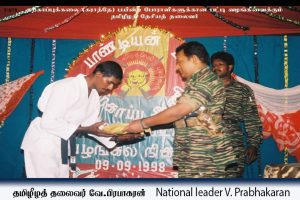
Pointing to the ancient monuments scattered throughout the forest, the leader said, “This is the forest where Bandaravanian once wandered. I will fight and win or die in the effort, but staying in this forest”. He focused on leading the fight. The LTTE senior members in India and the generals who were fighting on the field tried to protect the leader.
But the leader’s attention was neither on his own safety nor on the promises of money he had been given. His whole focus was on the political rights of the Tamil people. He replied that only giving money for rehabilitation would not be enough, the political rights of the people should also be guaranteed in a written statement, which he asked his representatives to convey to the Indian officials. they would take care of the issue of giving rights to Tamil. However, Colonel Verma who was negotiating on behalf of the Indian government refused this. He replied that the LTTE should hand down the weapons and take the money, and in return they would take care of the issue of giving the Tamil political rights.
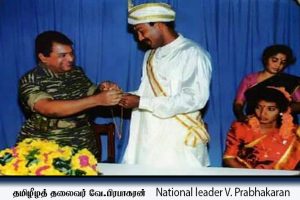 By offering facilities and privileges to the leaders of the oppressed people and subjecting them to the status of a pet dog, to suppress the uprising of that people or to subdue them by exerting pressure against those leaders and to make a people slaves through them. Or to do destructive work and weaken the people and impose half-baked solutions on it. These are the ideologies that the imperialists and the occupying forces have been successfully implementing for a long time.
By offering facilities and privileges to the leaders of the oppressed people and subjecting them to the status of a pet dog, to suppress the uprising of that people or to subdue them by exerting pressure against those leaders and to make a people slaves through them. Or to do destructive work and weaken the people and impose half-baked solutions on it. These are the ideologies that the imperialists and the occupying forces have been successfully implementing for a long time.
That ideology will be taken up only by leaders who see opportunities as privilege, and by leaders who fear for their own and family members’ lives. President Prabhakaran was at no point willing to give up the fight for the political rights of Tamils even when there were threats against his life. Instead, he was ready to face death, hunger and destruction.
His only ambition was to secure permanent freedom for the Tamil people. Even if that could not be possible, he wanted to pass on the message of keep on fighting for the rights to the next generation. This was the first time in our peoples’ history that that despite the conditions and threats from the Indian government and despite the opportunity to save his own life a leader chose to stay and face the threats. So far, the mistake of the previous Tamil leaders was to give up when they themselves or families faced threats and then afterwards trying to justify it.
Leader Prabhakaran’s activities contradicted this old political tradition. Leader Prabhakaran’s message to future generations through this incident is that it is better to fight against any danger to our people or to die in this fight.
Thus, the leader sent the following message to the LTTE representatives in India through telefax: “After I die, anyone can sell the movement and people to anyone, wholesale or retail.”
Compilation: – Commander Dinesh Master.
